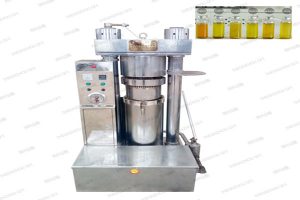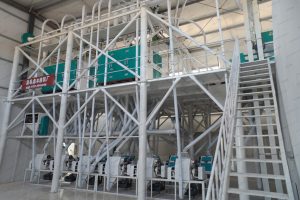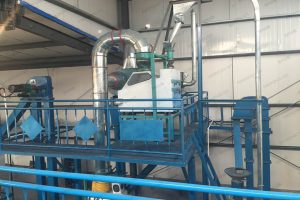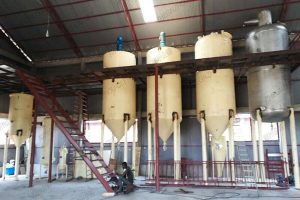10-30TPD automatic sesame oil processing plant project
This 10-30TPD sesame oil processing plant was completed in Sudan in May 2020. In 2019, this customer visited our factory and checked all the necessary equipment in our factory. Because he wanted to rebuild a brand new and efficient sesame oil processing plant based on the original oil processing plant. Therefore, in order to provide a practical factory layout and maximize the output, our engineers and sales staff went to Thailand twice to help ensure all the details, especially about the factory design, equipment selection, etc. Soon, he ordered an automated sesame oil manufacturing plant to expand his sesame oil production needs.(Related Post: Hydraulic Sesame Cold Oil Press Machine >>)
Sesame oil press machine installation
The main equipment for this sesame oil processing plant includes cleaning screen, destoning machine, water filtering and drying machine, roasting machine, screw oil expeller, hydraulic oil press, oil filter, etc. Below is the whole sesame oil procesing plant installation process.




Sesame oil processing plant cost
The cost of setting up a sesame oil processing plant should consider many aspects, including production capacity, sesame oil extraction process, sesame oil production machinery, requirements of the final sesame oil, level of automation, etc. Therefore, the exact cost varies depending on different considerations.
Sesame seeds and sesame oil production worldwide
Sesame is produced in quantities of more than 6 million tons per year and is an important cash crop in many countries. Sesame is a flowering plant native to India. Sesame has been domesticated throughout the world and grows best in tropical regions. The world’s main producers of sesame are sub-Saharan Africa and Southeast Asia. Tanzania leads the world in production, producing nearly 1 million tons per year. Myanmar, India, Sudan, China, and Nigeria are also major producers. These countries are also major producers of sesame oil.
Japan is the world’s largest importer of sesame products, as sesame oil is an important part of Japanese cuisine. China is the second largest importer. They generally import higher-quality seeds and export lower-quality products to Southeast Asia. Other major importers of sesame products are the United States, Canada, France, the Netherlands, and Turkey. Most producers in the Americas, Africa, West Asia, and India grow white or light-colored sesame, while China and East Asia grow black or dark-colored sesame. The price of sesame varies greatly depending on perceived quality; low-quality seeds typically sell for about $800 per ton, while high-quality seeds often sell for more than twice that price.
In Asia, although some sesame seeds are used in baked goods or sprinkled on sushi rolls, most sesame seeds are used as sesame oil. Many dishes in Asian cuisine use sesame oil as a standard ingredient, and Japanese tempura chefs also use sesame oil for deep-frying.




